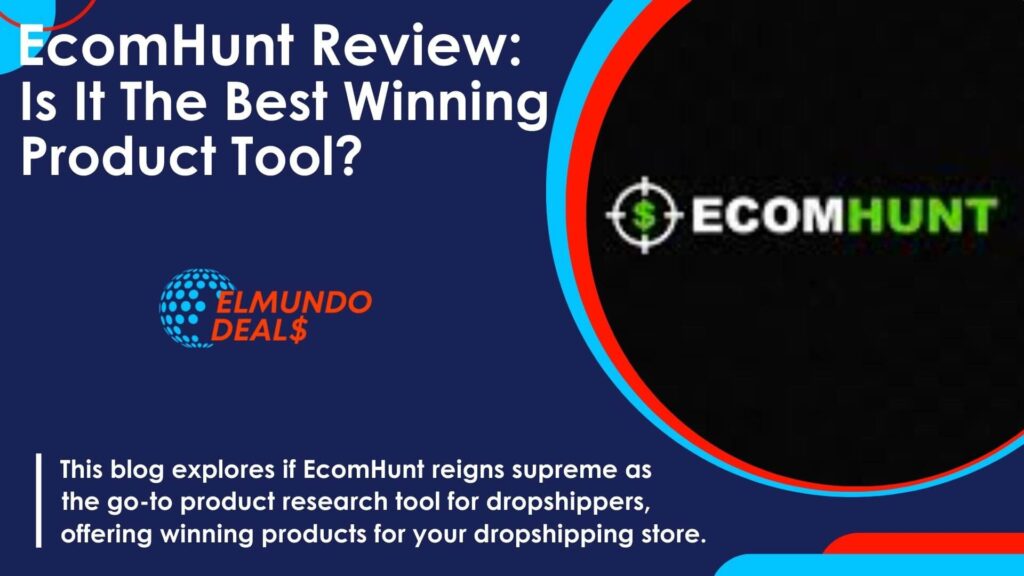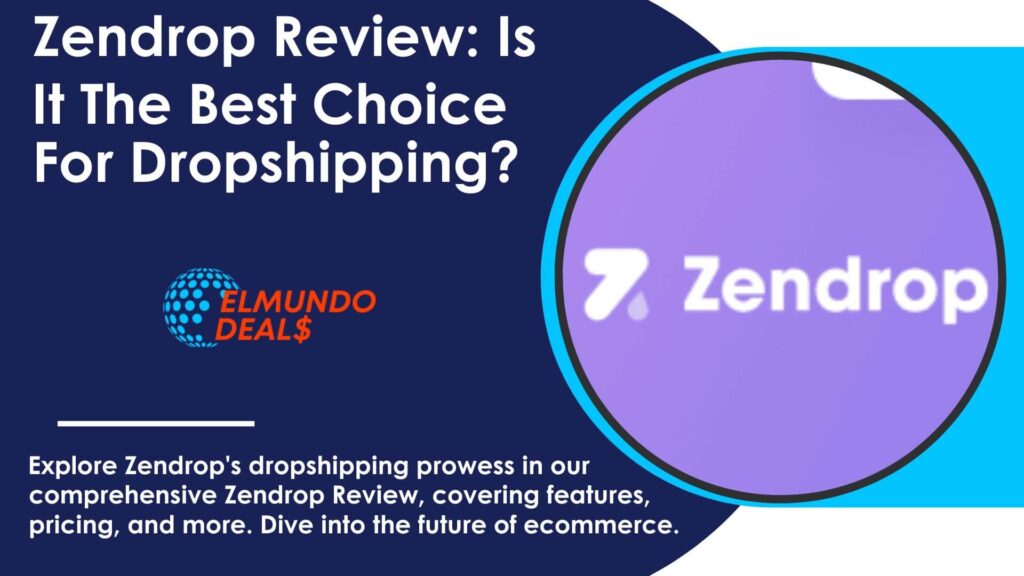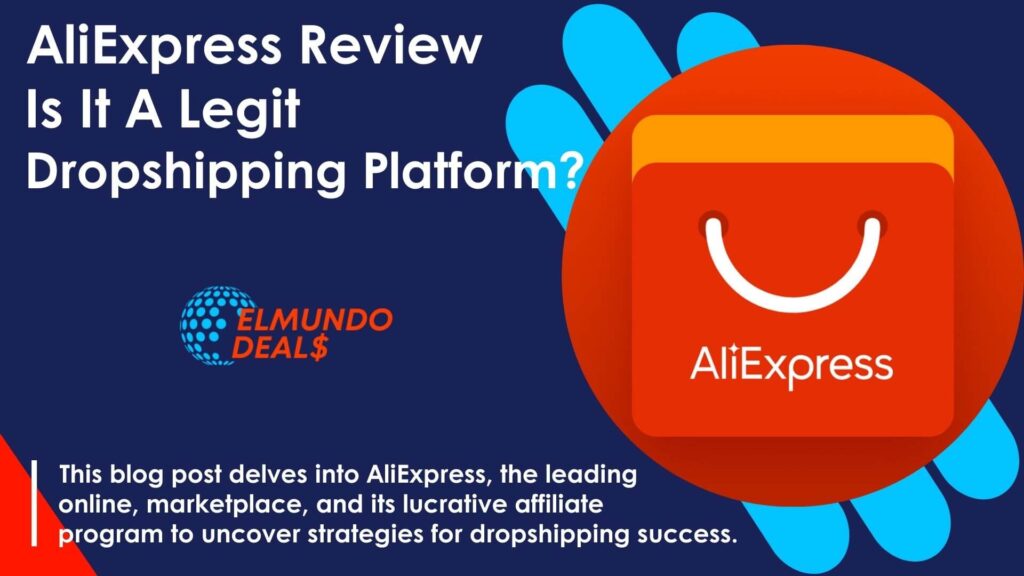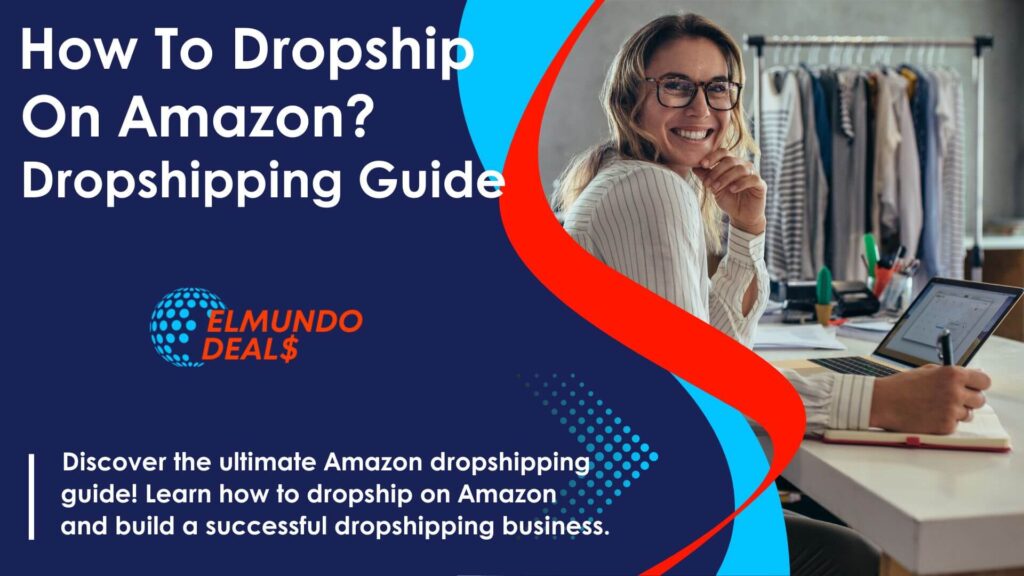Mastering Blind Dropshipping: Ultimate Guide For Online Sellers – Dropshipping Businesses
In an industry projected to hit a market value of over $557 billion by 2025, dropshipping success has become synonymous with innovative fulfillment strategies. Spearheading this evolution is blind dropshipping, a nuanced approach that empowers online business and ecommerce business owners to amplify brand loyalty discreetly. Whether you are starting a dropshipping business or seeking to grow your dropshipping business, understanding the intricacies of maintaining a profitable dropshipping business is pivotal. This definitive guide paves the way to build a successful dropshipping venture by navigating the hidden channels of supplier anonymity and customer satisfaction.
Key Takeaways
- Blind dropshipping could substantially enhance brand perception and encourage repeat business, which is crucial for longevity and profitability.
- Understanding supplier anonymity within blind dropshipping is essential for maintaining the integrity and unique identity of an ecommerce business.
- Starting a blind dropshipping business requires careful planning and a strategic approach to leverage its full potential.
- For a dropshipping business to thrive, the owner must establish reliable communication channels with suppliers and ensure seamless operational workflows.
- Growth strategies for a blind dropshipping business must account for customer loyalty programs and reputation management.
What Is Blind Dropshipping?

The essence of the dropshipping model is seamlessly integrating business operations with a trustworthy dropshipping supplier to deliver goods to customers. Blind dropshipping takes this a step further by offering an enhanced level of anonymity throughout the transaction. This approach helps an online store present a more branded experience to the customer, as the shipping details exclusively reflect the retailer’s information, not the supplier’s. Here’s a closer look at the components that make blind dropshipping a unique and strategic business model.
What is a Blind Packing List or ‘BOL’?
A Blind Packing List, also known as a Bill of Lading (BOL), is a document that comes with shipped goods but does not disclose the identity of the original dropshipping supplier. It typically features the retailer’s details, ensuring the customer perceives the package as coming directly from the dropshipping store. The BOL plays a critical role in safeguarding the retailer’s branding and customer loyalty.
What is a Double-Blind Dropship?
In a double-blind dropship scenario, both the buyer and the supplier are unaware of each other’s identities. This keeps the buying source confidential and allows the retailer to retain control over the buyer-seller relationship, fortifying the store’s position within the market.
How Does Blind Dropshipping Work As A Business Model?
Blind dropshipping functions as a protective barrier for businesses, encapsulating an image of self-reliance and self-sourcing of products. By utilizing a guide to dropshipping that incorporates blind dropshipping principles, retailers can enhance their brand’s perceived value and cultivate lasting customer relationships, which is crucial for sustaining and growing an online store.
| Blind Dropshipping Feature | Benefit to Retailer | Benefit to Customer |
| Anonymity of Supplier | Protection of business operations and supplier relationships | Simplified brand experience, assuming products come directly from the retailer |
| Customized BOL | Enhanced brand image and value proposition | Consistency in branding, reinforcing trust |
| Supplier and Buyer Separation | Control over market pricing and customer interactions | Direct support and communication with the retailer |
Blind dropshipping, while a variation of the traditional dropshipping model, accentuates the retailer’s brand, thereby providing a strategic advantage in the competitive sphere of online retail.
What Are The Differences Between Regular Dropshipping And Blind Dropshipping?

As dropshippers continually seek to refine their business models, the distinction between traditional dropshipping methods and blind dropshipping has become a critical focal point. One fundamental difference is how supplier information is presented to the customer. In regular dropshipping, the packaging often includes the supplier’s details, which can lead customers directly to the source, bypassing the dropshipper. Conversely, blind dropshipping ensures that this information is obscured, cementing the retailer’s bond with the customer.
For those utilizing platforms like AliExpress dropshipping, blind dropshipping can serve as an advantage in maintaining a secure and trusted brand identity. When customers sell products, they expect brand consistency and reassurance from the point of purchase to delivery—an aspect that blind dropshipping reinforces by having all shipping and packaging appear as though they came directly from the seller’s store.
Entrepreneurs who manage a dropshipping website or sell products online must recognize the additional costs that can accrue from adopting blind dropshipping practices. The heightened focus on protecting a brand’s reputation can necessitate more nuanced and personalized shipping documents and processes, as seen in the examples of dropshipping businesses that prioritize anonymity. Here’s a comparative table to summarize the key distinctions:
| Aspect | Regular Dropshipping | Blind Dropshipping |
| Supplier Transparency | Visible to customers | Concealed to protect retailer’s brand |
| Brand Impression | Neutral, as the focus is on the product | Enhanced, with an emphasis on reliability and trust |
| Customer Relationship | Diverted towards suppliers | Strengthened with the retailer |
| Operational Costs | Generally lower due to standard procedures | Potentially higher from maintaining supplier anonymity |
| Order Volume Management | Scalable, handling large volumes efficiently | Highly personalized, it may not be as cost-effective for smaller volumes |
With modern consumers increasingly investing in brands that they resonate with, the strategy of removing supplier information can ultimately form part of a broader narrative that appeals to the target audience. Many examples of successful dropshipping businesses underscore the importance of nurturing customer relationships and the perceived value of receiving goods from a single identifiable source — a practice that blind dropshipping supports by presenting products as if they were directly sourced from the seller.
While traditional dropshipping methods may cater well to larger-volume orders and sellers’ content with a more arms-length transaction, blind dropshipping is tailored for those aiming to create a tighter bond with their clientele, exemplifying their brand through each customer interaction, from the online storefront right through to the unboxing experience.
Blind Dropshipping Return and Refund Policies
Starting a dropshipping business requires a robust approach to handling returns and issuing refunds while maintaining the veil of supplier anonymity. A successful dropshipping business hinges on customer satisfaction and loyalty. Therefore, it’s imperative for any business owner to strategically design return and refund policies that prioritize customer retention without compromising the essence of blind dropshipping.
While some retailers prefer to manage returns by receiving the products at their premises for inspection, others rely on their dropshipping service partners to streamline the process. The following table presents a comparative review of both strategies, helping entrepreneurs decide which policy aligns best with their operational goals and customer service standards.
| Policy Type | Benefits | Considerations |
| Direct Retailer Returns | Enhanced quality control and personalization in customer service | Potential increase in handling and shipping costs |
| Supplier Warehouse Returns | Operational efficiency and scalability | Dependence on supplier’s return processing standards |
In the context of blind dropshipping, clear communication of return and refund policies to customers is also a critical aspect. Transparent policies act as a foundation of trust and are a marker of a dropshipping service that respects consumer rights while balancing the interests of the retailer.
Remember: Tailoring your return policy to provide an effortless and secure process for your customers will directly result in higher rates of customer retention and the ongoing success of your dropshipping venture.
Is Blind Dropshipping Profitable For Dropshipping Businesses?
Embarking on a dropshipping journey involves various models and strategies aimed at optimizing profitability. One particular approach is blind dropshipping, which conceals supplier information to protect the seller’s interactions and relationship with customers. This strategy accentuates the advantage of dropshipping: the ability to build a customer-focused brand without the need for extensive inventory.
To determine whether this approach favors your Shopify dropshipping business and contributes to your profit margin, it’s essential to scrutinize the fiscal dynamics behind the blind dropshipping concept. Here are some vital monetary aspects where blind dropshipping can either amplify or constrain your ecommerce operation:
- Customer Retention: Blind dropshipping strengthens trust, which can lead to repeat customers—a valuable asset considering the cost of acquiring new customers.
- Brand Image: By providing a seamless shopping experience, your brand’s perceived value increases, potentially justifying higher prices.
However, while dropshipping offers a wide range of advantages, merchants must consider the extra costs associated with maintaining the privacy and exclusivity of their supply chain. Fine-tuning supplier processes to ensure anonymity and consistency in customer experience might involve an uptick in operational costs.
Crucially, the intersection where cost impacts profit occurs at the nexus of increased brand value and customer loyalty. This is the balance that sellers must master to gain from blind dropshipping successfully.
For those ambitious entrepreneurs beginning their online for free with limited capital, the allure of blind dropshipping is potent. The key to turning this allure into sustained, long-term gain will inevitably be precision in strategy, flawless execution, and a relentless focus on customer satisfaction.
In conclusion, while additional investment may be required to uphold the blind element of dropshipping, the enduring loyalty and potential repeat business from satisfied customers can make this model a fruitful venture for discerning ecommerce entrepreneurs. The goal is to navigate through the demands of additional costs while leveraging the unique benefits that blind dropshipping provides.
Pros and Cons of Blind Dropshipping

When uncovering the essence of a competitive dropshipping landscape, the blind dropshipping business model presents an intriguing dichotomy of advantages and challenges. Grasping these can be pivotal for merchants aspiring to make a dropshipping store synonymous with success in dropshipping. Let’s dissect these elements to cultivate a robust business strategy for entrepreneurs looking to venture into the world of dropshipping.
Pros of Blind Dropshipping
The pros of employing a blind dropshipping approach can significantly bolster a brand’s perception and foster enduring customer relationships. Advantages extend to:
- Enhanced brand perception: Customers typically prefer receiving goods from a singular, trusted source, which blind dropshipping secures, thereby elevating the perceived value of the brand.
- Increased customer retention: Success in dropshipping often hinges on return customers. Blind dropshipping fortifies this by creating a seamless, branded experience that encourages loyalty.
- Protection from competition: Keeping supplier details under wraps serves as a strategic shield against competitors who may seek to undercut your business by approaching your sources.
Cons Of Blind Dropshipping
On the flip side, riding the wave of blind dropshipping isn’t without its trials. It demands a nuanced understanding of its inherent complexities:
- Elevated operational costs: The price of privacy isn’t negligible; obscuring supplier information can lead to increased expenses that impact profitability.
- Dependence on supplier reliability: Your brand’s image is inexorably linked to your supplier’s performance; any slip in their service reflects directly on your business without the shield of transparency.
- Complexity in management: The art of managing a dropshipping business model under a veil of secrecy demands a meticulous approach, particularly when handling double-blind shipments.
| Aspect | Advantages of Blind Dropshipping | Disadvantages of Blind Dropshipping |
| Brand Perception | Enhances customer trust and brand value | High dependence on supplier consistency and quality |
| Customer Retention | Builds loyalty through a uniform brand experience | Requires rigorous oversight of the order fulfillment process |
| Supplier Protection | Prevents competitors from identifying and approaching suppliers | Incur additional costs to maintain concealed supplier info |
| Operational Efficiency | Dropshipping products directly to customers enhances efficiency | Complexity in managing logistics and supplier coordination |
In conclusion, the decision to make your dropshipping business adopt a blind dropshipping approach should be meticulously weighed, taking into account the inherent pros and cons. Thorough planning, strategic foresight, and judicious management can leverage blind dropshipping to carve out a significant competitive edge in the e-commerce realm.
How To Blind Dropship With Your Reliable Supplier
When you start dropshipping, one of the most important steps is to establish a robust partnership with a reliable supplier. Success in this type of online business hinges on your ability to foster and maintain open lines of communication with suppliers. As a dropshipper, you are reliant upon their efficiency and consistency to maintain your business’s reputation. Utilizing dropshipping tools can significantly streamline the process, but the foundation of this partnership is built on trust and transparency.
Efficiently partnering with suppliers involves both parties understanding and implementing a tailored process for order placement and fulfillment. This includes specifying the packaging and shipping requirements to ensure that the customer’s experience aligns with the image of your brand. For example, a double-blind dropshipping system might be required to guarantee that both the order’s destination and origin remain confidential from the supplier and the customer.
Establishing clear guidelines with your supplier about order processing and accurate labeling will prevent potential logistical errors and fortify customer confidence in your brand’s ability to deliver.
Below, find some tips and steps essential for successful blind dropshipping:
- Research extensively to select suppliers known for their reliability and excellent service.
- Initiate and maintain ongoing communication to understand their capabilities and limitations.
- Clearly outline your business model and expectations regarding blind dropshipping practices.
- Leverage technology by integrating dropshipping tools that facilitate order sharing and tracking.
- Provide suppliers with branded packing slips and any specialized packing instructions.
Your supplier’s reliability reverberates throughout every aspect of your business operations, from inventory management to timely delivery. This is why consistent, accurate, and transparent communication stands as a fundamental pillar of the dropshipping business model. For those ready to start dropshipping, remember that your supplier is not just a service provider but a vital partner in your journey to securing customer satisfaction and solidifying your brand’s reputation.
Which Service To Use To Start A Blind Dropshipping?

When aiming to start a business in the realm of ecommerce, particularly blind dropshipping, one must consider dropshipping platforms that cater to the specific needs of maintaining a competitive edge. A pivotal aspect of this is choosing an appropriate platform for your dropshipping business that not only supports the creation of a dropshipping model but also seamlessly integrates with print-on-demand services.
AutoDS emerges as an exceptional service in this niche, offering comprehensive tools to efficiently set up your online store and manage products with ease. It stands out by allowing sellers to choose a dropshipping platform that supports both inventory management and the enhancement of the customer experience through personalized products.
Leverage POD In Blind Dropshipping – Online Store
For those keen on diversifying their product range and bolstering their brand, utilizing a service that integrates print-on-demand (POD) within a blind dropshipping framework is indispensable. This strategic approach not only facilitates a unique product offering with custom designs but also addresses the growing market demand for personalized and unique items. Let’s explore how POD services can be incorporated into your dropshipping business model.
| POD Service | Features | Benefits |
| Custom Branding | Ability to add logos and branded packing | Strengthens brand identity and increases customer loyalty |
| Product Diversity | Wide range of products available for customization | Expands market reach and caters to varied customer interests |
| Quality Assurance | High-quality prints and materials | Enhances customer satisfaction and encourages repeat business |
| Dropshipping Integration | Seamless integration with dropshipping platforms like AutoDS | Simplifies operations and reduces the learning curve for new sellers |
Selecting a service that aligns with the demands of blind dropshipping, one that includes POD capabilities, is paramount for any entrepreneur poised to start a business and carve out a successful niche online. AutoDS offers an exemplary platform to set up your online store and take the first confident steps toward crafting a robust dropshipping business empowered with print-on-demand product versatility.
Is Blind Dropshipping Worth It?
For many in the digital commerce arena, blind dropshipping is more than a mere trend; it’s a strategic approach that fosters brand loyalty and heightens consumer trust. The additional efforts and potential costs can be justified by the potential increase in customer returns, making it a valued model for those committed to long-term growth.
| Aspect | Benefit to Supplier | Benefit to Dropshipper |
| Market Expansion | Reaches a broader audience via dropshippers’ networks | Access to a wider selection of products without upfront costs |
| Brand Perception | Enhances brand value through association with reputable dropshippers | Bolsters own brand identity and customer loyalty |
| Legal and Transparent | Fosters a reliable image in the business milieu | Operates within legal norms, promoting consumer trust |
| Cost-Benefit Scale | Increases order frequency without additional marketing expenses | Secures higher end-customer retention rates, offsetting initial investment |
Conclusion: Mastering Blind Dropshipping
In the competitive landscape of e-commerce, blind dropshipping stands out as a strategic model for marketing your business and safeguarding your brand’s integrity. As this thorough beginner’s guide has illuminated, understanding the mechanics of dropshipping is pivotal in managing a business that not only starts but consistently grows. Implementing blind dropshipping requires a well-structured business plan and an unwavering commitment to running a business that prioritizes customer trust and brand loyalty.
As sellers embark on this business venture, the core principles detailed in previous sections serve as indispensable tools for navigating the nuances of this innovative fulfillment strategy. Blind dropshipping, when executed with diligence and precision, offers a robust platform for those who aspire to run a business that thrives on customer confidentiality and exclusive brand experiences. It presents an opportunity for growth, allowing e-commerce entrepreneurs to expand their market reach and foster a profitable business growth trajectory.
Embrace the potential that blind dropshipping harbors, and let it guide you towards constructing a resilient, customer-centric online presence. With the key strategies and insights imparted, you are now equipped to embark on a journey of transforming your dropshipping business into an authoritative e-commerce entity. As your business grows, remember that the foundation of blind dropshipping is the seamless alliance between supplier discretion and customer satisfaction, anchoring your e-commerce success in the ever-evolving digital marketplace.

FAQs e-Commerce For Dropshippers
What is Blind Dropshipping?
Blind dropshipping is a business model where the supplier ships products directly to customers without including any of their own branding or identity, making it appear as though the products come from the retailer instead. This model helps retailers establish their brand presence and customer loyalty.
What is a Blind Packing List or ‘BOL’?
A blind packing list, or BOL (Bill of Lading), is a shipping document that’s modified in blind dropshipping to exclude the supplier’s details. It ensures the supplier remains anonymous and maintains the illusion that the shipment originates from the retailer’s store.
What is a Double-Blind Dropship?
Double-blind dropship is an advanced form of blind dropshipping where both the retailer and the customer remain unaware of each other’s identities. This method requires thorough coordination between the retailer and the dropshipping supplier to maintain the secrecy of both parties.
How Does Blind Dropshipping Work As A Business Model?
Blind dropshipping works by having the retailer market and sell products online, with orders being fulfilled directly by the supplier who ships the products to customers. The customer-facing elements, like packing slips and other shipping documentation, bear the retailer’s brand, not the supplier’s.
What Are the Differences Between Regular Dropshipping and Blind Dropshipping?
The critical difference between regular and blind dropshipping is the visibility of the supplier’s information. Regular dropshipping may allow customers to see who the original supplier is, while blind dropshipping keeps this information hidden, promoting the retailer’s brand directly to the customer.
What Are Blind Dropshipping Return and Refund Policies?
Blind dropshipping return and refund policies should be tailored so that the supply chain remains invisible to the customer. This may involve having returns sent back to the retailer or directly to the supplier, depending on the business operations and agreement with the supplier.
Is Blind Dropshipping Profitable For Dropshipping Businesses?
Yes, blind dropshipping can be profitable for dropshipping businesses. It can help build a strong brand identity, encourage repeat business from customers, and protect business relationships by keeping supplier details private. However, profitability also depends on effective marketing, customer service, and the ability to manage costs.

What Are the Pros and Cons of Blind Dropshipping?
The pros of blind dropshipping include enhanced brand loyalty, improved customer retention, and protection against customers who directly contact suppliers. The cons can involve higher operational costs, reliance on supplier performance for brand reputation, and the complexity of arranging blind shipments.
How To Blind Dropship With Your Reliable Supplier?
To blind dropship with a reliable supplier, establish an explicit business agreement outlining the blind dropshipping requirements, maintain open communication channels, and utilize dropshipping tools for efficiency. Transparency and trust between you and your supplier are crucial.
Which Service To Use To Start A Blind Dropshipping?
Choose a dropshipping service that supports blind dropshipping and has integration tools for managing orders, such as AutoDS or Oberlo. You should also consider services offering Print on Demand (POD) if you plan to offer customized products.
Why Would a Supplier Agree To Blind Dropshipping?
Suppliers agree to blind dropshipping because it expands their reach through the retailer’s marketing efforts, increases sales volume without direct customer interaction, and builds their business through the retailer’s brand.
Is Blind Dropshipping Legal?
Yes, blind dropshipping is a legal practice, assuming that all parties adhere to standard business and regulatory standards, including quality control, returns, and customer service policies.
Is Blind Dropshipping Worth It?
Blind dropshipping can be worth it for businesses looking to cultivate a strong brand presence and customer loyalty. While there are additional challenges and costs compared to standard dropshipping, the long-term benefits of increased customer trust and potential for repeat business can outweigh these drawbacks.













